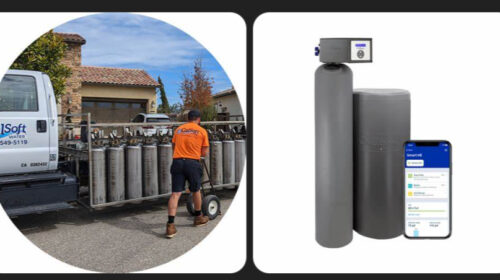If you’ve ever stood in an older home and felt like a marble would roll across the room, you’re not alone. Sloping floors are incredibly common in homes built more than 30 years ago — especially those with raised foundations in places like Orange County, Los Angeles, and the Inland Empire.
While many sloping floors aren’t dangerous, they’re usually a sign of underlying movement that deserves a closer look. Thankfully, not every fix requires jacks or foundation contractors — some can be corrected cleanly and professionally by tradespeople who understand framing and floor leveling.
🏡 The Main Reasons Older Homes Develop Floor Slopes:
1. Natural Settling Over Time
All homes settle. But homes built in the 1950s–1970s (especially in hillside neighborhoods like La Habra Heights, Altadena, and Anaheim Hills) often rest on clay soils that expand and contract with moisture — pulling posts, piers, and beams downward in subtle ways.
2. Joist Sag or Undersized Lumber
Long wood spans, especially over 12–14 feet, tend to flex over decades. In the past, builders often used 2×8 or 2×10 joists that were “just enough” by code — but over time, the weight of furniture and foot traffic leads to bowing and soft spots.
Pro Tip: Many 2nd story floors show more sag than 1st story floors — because they were never reinforced during remodels.
3. Poor Crawl Space Ventilation
Raised foundation floors need dry air to circulate. But clogged vents or blocked access points lead to moisture, which can warp framing from underneath.
4. Missing or Damaged Support Posts
Sometimes a support post is missing entirely — or was added on-site with no concrete pad below. These “floating” fixes slowly sink and cause the floor above to tilt.
🔍 Should You Be Concerned?
Mild sloping (1/2″ over 10 feet) is often normal in older homes. But if:
- Furniture leans noticeably
- Doors don’t close properly
- Cracks show up in walls near floor lines
…then it’s time to evaluate. The fix might be simpler than you think.
🔧 Solutions That Don’t Require Jackhammers
At Orange County Handyman Services, we offer hands-on help that doesn’t break the bank:
- Use a laser level to identify the high point and low spots
- Sister existing joists to flatten spans
- Add crawl space support blocks (if sag is from below)
- Upgrade to 1-1/8” subfloor for a rock-solid foundation above
These targeted repairs bring big improvements — without needing permits or major demolition.
📚 Learn More from Related Posts:
- 👉 0201 – How to Level a Sagging Second Story Floor Without Tearing Everything Apart
- 👉 0203 – Understanding Joist Sag: Why Your Floor Bounces or Feels Uneven
- 👉 0204 – Sistering Floor Joists: A Smart Way to Re-Level Raised Floors
- 👉 0211 – Why Second Story Floors Can Feel Crooked — Even in Newer Homes
🌎 Proudly Serving Southern California
Whether you live in Orange County, Los Angeles County, or the Inland Empire, we understand the quirks of older California homes — and we can help you make your floors feel solid again.



Leave a Reply